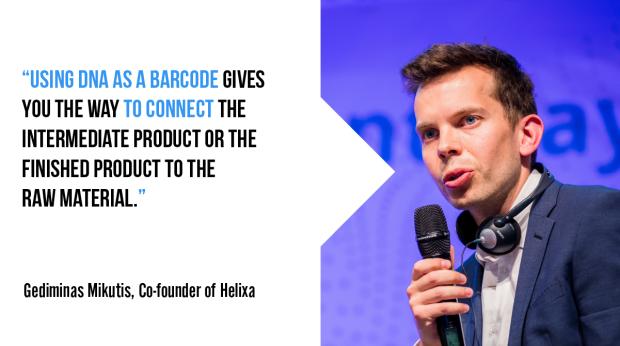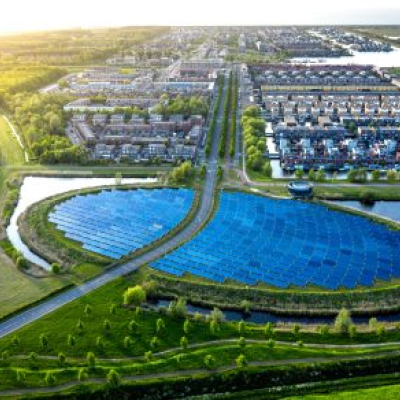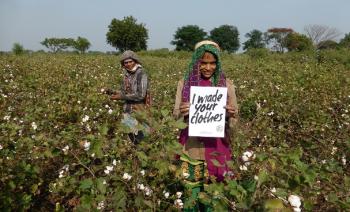The article is also available in French and Spanish.
Members of the Capacity4dev community are fostering relationships between Europe and its partners on a global scale and assisting in the development of ethical solutions for the textile industry. As a champion of innovation, Capacity4dev spoke to some of the actors behind the most exciting international initiatives showcased during the 2022 Global Gateway-themed European Development Days and implemented by the United Nations Economic Commission for Europe (UNECE).
The fashion industry is an ancient one, which goes back centuries. As Giorgio Ravasio, Country Manager Italy, Vivienne Westwood Srl, explains “the way that fabrics were made two thousand years ago is very similar to today”.

While the idea of "buy less and choose better" has become more popular in the Western world, UNECE has created The Sustainability Pledge platform for the fashion industry, which aims to improve traceability and transparency tools in the garment and footwear supply chain. With traceability being the core foundation of sustainability, tackling supply chain traceability was inevitable. In recent years, supply chains have become so complex that products have lost their integrity, therefore damaging social and environmental conditions, and lowering supply chain standards. It is hoped that in the future this tool will be used worldwide, and become a mainstay of the fashion industry.
Bitesize tips for applying sustainable value chains in the textile industry
New digital technology and solutions can play an important role in making the textile industry more sustainable. Blockchain solutions address supply chain deficiencies by enabling fashion brands to track their products from raw materials to end product. Assuming trustworthy information is entered at source, that same information will reach the in-house or retail end user without any possibility of interpretation. Another new technology is the use of DNA as barcode to authenticate the product. As Gediminas Mikutis, Co-founder of Helixa, explains “Using DNA as a barcode gives you the way to connect the intermediate product, or the finished product, to the raw material’’.

However, as the fashion industry is made up of countless small family-owned companies – who don’t use much technology in their daily activities – the adoption of new digital technology and solutions such as blockchain can present some challenges. Many of the smallest factories do not have the financial resources to invest in such exclusive technology, instead they rely on free, universally accessible, easily-manageable open-source software. As a result, larger and more financially sustainable fashion brands have to commit to investing resources in the process of collecting information, sharing education and providing training on the tools to everyone involved in their supply chain, and do so from the bottom-up. This requires flexibility, capability and commitment to doing something sustainable and worthwhile. The idea is to establish a new common mindset, clear and understandable to suppliers from different cultures around the world, in order to create a network of factories that delivers to the same standards and meets the same deadlines.
A considerable share of the supply chain is not transparent where products of agriculture, mining and textile provenance are concerned. Such failures cost a lot more than financial resources. Time and development invested into bringing a product tailored for a specific supply chain, which ultimately only generates a limited traction within the supply chain, are also wasted. While aligning all parties in the supply chain is no small feat, positive reinforcement of best practices can bring enormous rewards to the industry. The most straightforward reward is always the cost of product that a customer is willing to pay. It is about moving away from the cost-based pricing approach – which focuses on the company's situation, when determining price to value-based pricing – where prices are primarily based on a consumer's perceived value of a product or service.
Gediminas Mikutis, Co-founder of Helixa, provides his insights and shares an example: “As a farmer, if you are using more sustainable practices, if you are using less pesticides, you want to make sure that you are rewarded for that, because today what happens very often is if you are into mass production with pesticides, with chemicals, you get the economies of scale. Your product is cheaper and that's where the retailer is inclined to go. Now, if you are rewarded for making the product better, because you know where your product ends up and the retailer can trace it back, then you are incentivised to make even better products. In the end, it is connecting you to retailers and giving you a voice in the supply chain. If you as a retailer know where the products are coming from, you can work with those communities, you can work with those firms, to try to improve their conditions and how they work, which in the end makes your supplier happy while making the product better. It all concurs to making your product more sustainable”.
3. Stay on top of industry trends
What are considered as emerging trends in the textile industry may not always be as sustainable as advertised. A closer look at the actual emissions from recycled yarns, whether at post-consumer or pre-consumer stage, paints a different picture – as the process of recycling yarns produces a lot more emissions than normal yarn. Efforts must be made to consider the actual emissions from all types of yarns to lessen the impact on the resources available, and fabric manufacturers have to review their impact year-on-year.

On the brighter side, human creativity knows no limits, and there are no shortage of innovative solutions that mix fashion with sustainability. In fact, online spaces and initiatives facilitating networking among innovators can also contribute. As Nancy Salem, Export Manager, Salem Tex Lace, mentions “Community platforms such as Capacity4dev keep you educated and informed of all these initiatives and help you see what others are doing. It pushes you to move forward”.
Recommend & share this article if you think it will be helpful for your peers
Click on the play button below to watch our video about the textile industry










Log in with your EU Login account to post or comment on the platform.